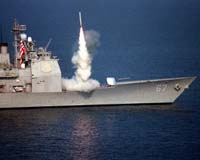By Evan Ackerman
Somewhat unusually, there are a couple things going on up in the sky this Wednesday night, at least for those of us who don’t live in Asia or Australia (sorry chaps). The first thing to look forward to is a total lunar eclipse, which should be visible in its entirety from the central and eastern US and Canada as well as western Europe. Eastern Europe and most of Africa will be able to see the eclipse beginning as the moon sets, and the western US will catch it in progress as of moonrise. The moon will be completely within the shadow of the Earth as of 10pm EST, and won’t start to come out again until 10:50pm. During that time it’ll turn a lovely reddish-orange, thanks to the sunrises and sunsets refracting light past the limbs of the Earth. If you live in North America, your next chance to see something like this will be December 21, 2010, so get your butt out there and take a look.
 The other big thing that’s going on Wednesday night (in the middle of the eclipse, in fact) is that the United States is going to try to shoot down a dysfunctional spy satellite over Hawaii with a sea launched interceptor missile. If you live in Hawaii, fear not, the debris cloud is headed for central Canada, and as far as I know, nobody actually lives in Canada. Not that they’d have any toxic hydrazine propellant to worry about. Oh wait, there’s 1000 pounds of it on board. That, in fact, is the US government’s rationale for shooting the thing down: they don’t want it to crash into a populated area. Sounds reasonable, but it’s actually total bunk, according to Danger Room. In fact, it’s far more likely to be a response to the Chinese anti-satellite missile test of a year ago, despite the heavy criticism of that test from the United States. More on why the US Government thinks we need to shoot this thing down, and why none of their reasons make much sense, after the jump.
The other big thing that’s going on Wednesday night (in the middle of the eclipse, in fact) is that the United States is going to try to shoot down a dysfunctional spy satellite over Hawaii with a sea launched interceptor missile. If you live in Hawaii, fear not, the debris cloud is headed for central Canada, and as far as I know, nobody actually lives in Canada. Not that they’d have any toxic hydrazine propellant to worry about. Oh wait, there’s 1000 pounds of it on board. That, in fact, is the US government’s rationale for shooting the thing down: they don’t want it to crash into a populated area. Sounds reasonable, but it’s actually total bunk, according to Danger Room. In fact, it’s far more likely to be a response to the Chinese anti-satellite missile test of a year ago, despite the heavy criticism of that test from the United States. More on why the US Government thinks we need to shoot this thing down, and why none of their reasons make much sense, after the jump.
The big problem with this satellite is supposed to be the big tank of hydrazine on board. Yes, hydrazine is potentially dangerous, but it’s not that dangerous in this context… If the hydrazine was released, it might cause mild burning in the lungs or on the skin, but the effected area would be “roughly the size of two football fields [where you might] incur something that would make you go to the doctor,” according to Joint Chiefs of Staff Vice Chairman Gen. James Cartwright. Furthermore, plenty of things (about 10 in just the last year) containing hydrazine in some quantity have come back to Earth from space, and no toxic clouds of gas have resulted. So, what’s the big deal?
Danger Room says that basically, this test may be “simply a knee-jerk reaction made by the Administration in response to the purported threat by the Chinese. Since the April 2007 ASAT [anti-satellite] test, there have been rumors and whispers going around that the Administration and like-minded individuals are looking for more sticks (instead of carrots) to use against China. While this “shoot down” is not a direct action against China, it would be a clear signal that the US can possess an active ASAT capability at any time if it so desires.”
The first attempt at an intercept is going to take place at about 10:30 EST, with a second attempt a day later if necessary. The interceptor is a modified SM-3 missile, which is the core of the US ballistic missile defense program and has a batting average of 0.85 in conventional intercepts. Whatever the real reason for this intercept is, the results should be pretty interesting, as will be the international reaction.
[ NASA’s Lunar Eclipse Page ]
[ Danger Room’s Satellite Shoot-Down Analysis ]










